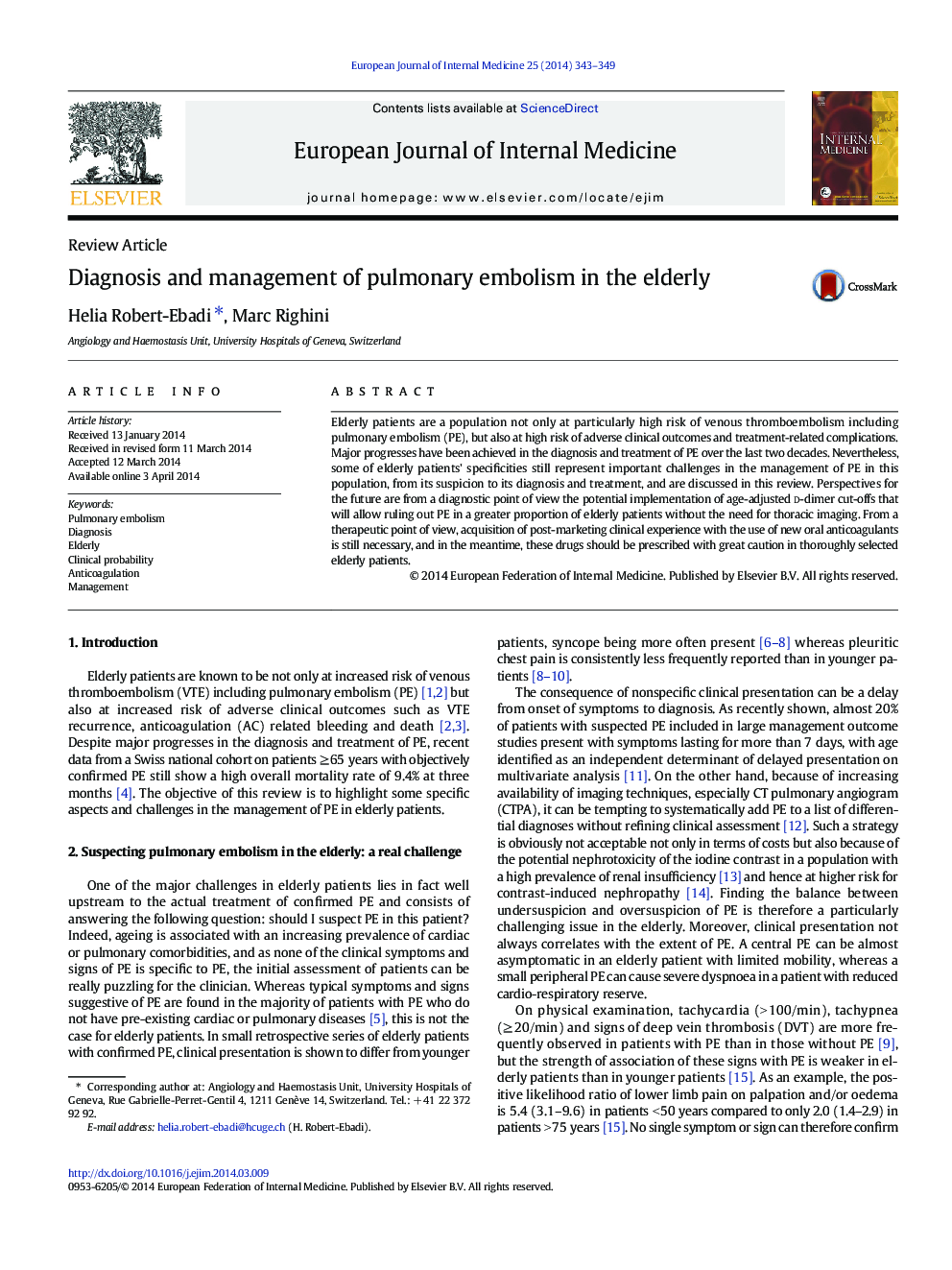| Article ID | Journal | Published Year | Pages | File Type |
|---|---|---|---|---|
| 3466785 | European Journal of Internal Medicine | 2014 | 7 Pages |
•Clinical presentation of PE is aspecific particularly in elderly patients.•Increasing age is associated with reduced diagnostic performance of d-dimer.•Age-adjusted cut-offs could increase d-dimers' usefulness in older patients.•Experience is still needed before widespread prescription of NOA in the elderly.
Elderly patients are a population not only at particularly high risk of venous thromboembolism including pulmonary embolism (PE), but also at high risk of adverse clinical outcomes and treatment-related complications. Major progresses have been achieved in the diagnosis and treatment of PE over the last two decades. Nevertheless, some of elderly patients' specificities still represent important challenges in the management of PE in this population, from its suspicion to its diagnosis and treatment, and are discussed in this review. Perspectives for the future are from a diagnostic point of view the potential implementation of age-adjusted d-dimer cut-offs that will allow ruling out PE in a greater proportion of elderly patients without the need for thoracic imaging. From a therapeutic point of view, acquisition of post-marketing clinical experience with the use of new oral anticoagulants is still necessary, and in the meantime, these drugs should be prescribed with great caution in thoroughly selected elderly patients.
